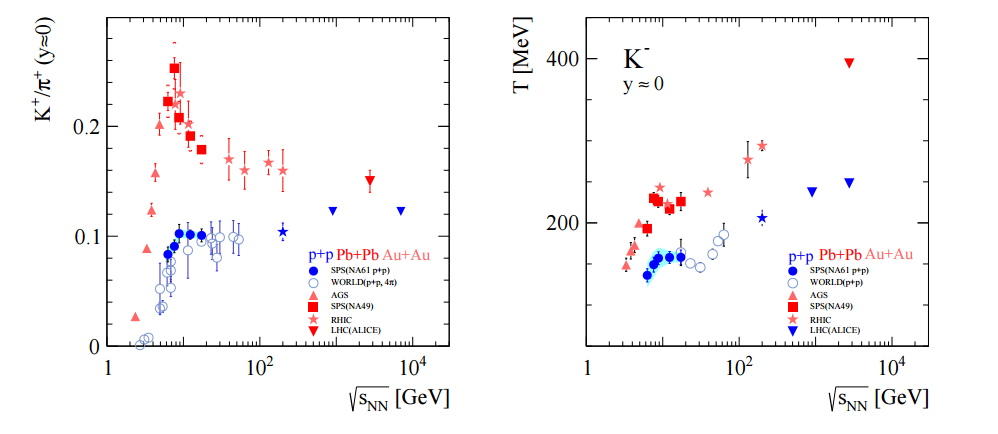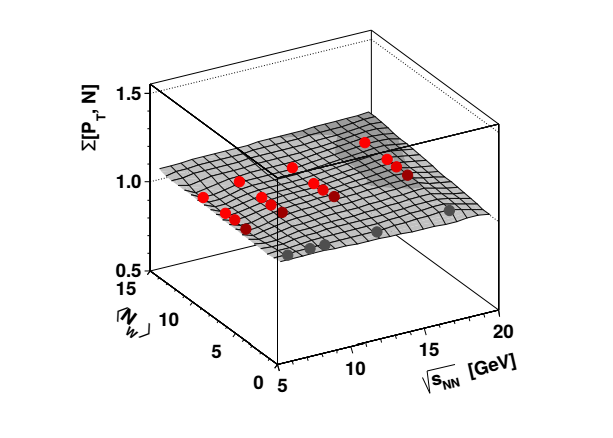NA61/SHINE sheds light on strong Interactions
The past several months were particularly important for the NA61/SHINE programme on strong interactions. This period was crowned by the ongoing beam energy scan with argon-scandium collisions. Here the key events are summarized, but first NA61/SHINE is briefly introduced.
The NA61/SHINE experiment at CERN
NA61/SHINE (SPS Heavy Ion and Neutrino Experiment) [1] is a multi-purpose experiment-facility to study hadron production in hadron-proton, hadron-nucleus and nucleus-nucleus collisions at the SPS. Measurements for three physics programmes are performed:
(i) The programme on strong interactions which includes the study of the properties of the onset of deconfinement [2] and the search for the critical point of strongly interacting matter [3]. The data on nucleus-nucleus, proton-proton and proton-lead collisions at six collision momenta are to be recorded within this programme.
(ii) Precise hadron production measurements for improving the computation of the properties of neutrino beams at J-PARC, Japan and Fermilab, US. Here proton/pion-carbon and proton/pion-(replica target) interactions are recorded.
(iii) Precise hadron production measurements needed for reliable simulations of cosmic-ray air showers. The Pierre Auger Observatory and KASCADE experiments requested measure- ments of pion-carbon interactions at the top SPS beam momenta.
NA61/SHINE has greatly profited from the long development of the CERN proton and ion sources, the accelerator chain, as well as the H2 beam-line of the CERN North Area. The latter delivers secondary hadron beams: protons, kaons and pions. It was recently modified to serve as a fragment separator as needed to produce secondary beryllium beams, as well as to provide primary ion beams. The argon beams delivered to NA61/SHINE in the February-April 2015 run were the first primary ion beams transported via the upgraded H2 beam-line.
Now let us review the recent NA61/SHINE events concerning the programme on strong interactions.
News on the onset of deconfinement.

Figure 1: Recent results on the phase transition in nucleus-nucleus collisions. The horn (left) and step (right) structures in the energy dependence of the K+/π+ ratio and the inverse slope parameter of K- m⊥ spectra are interpreted as evidence for the onset of deconfinement located at low CERN SPS energies. The structures were first discovered by NA49 in central Pb+Pb collisions. Surprisingly their shadows are visible in p+p interactions as indicated by the new NA61/SHINE data.
Rapid changes of collision energy dependence of basic hadron production properties (see Fig. 1) were discovered by the NA49 Collaboration at the SPS in its energy scan with central Pb+Pb collisions [4, 5]. The discovery confirmed predictions of the Statistical Model of the Early Stage of nucleus-nucleus collisions [6] for the phase transition to quark-gluon plasma. The model predicts that with increasing beam energy the energy density of the matter created at the early stage increases and starting from medium SPS energies, the matter created is in the state of quark-gluon plasma. NA61/SHINE studies how the observed structures change when the volume of the created matter decreases down to the one in p+p interactions.
In October 2014 first results from the NA61/SHINE energy scan were released [7]. Surprisingly the new NA61/SHINE data suggest that even in inelastic p+p interactions the energy dependence of the K+/π+ ratio and the inverse slope parameter of kaon transverse mass spectra exhibits rapid changes, see Fig. 1. However, the structures, e.g. the step and horn, are significantly reduced/modified compared to those in central Pb+Pb collisions. The corresponding analysis of Be+Be collisions is ongoing and coming results are expected to shed further light on the volume dependence of these structures which were related to the onset of deconfinement.
News on the critical point.
After the discovery of the structures which likely locate the transition between the confined and deconfined strongly interacting matter, the new challenging goal is to uncover properties of the phase transition region. The most popular suggestion is shown schematically in Fig. 2. The transition at low temperature T and high baryochemical potential μB is believed to be of the first order and happen along a line which ends with decreasing μB in a critical point (of the second order) and then turns into a rapid crossover.

Figure2: Sketch of the phase diagram of strongly interacting matter. Italic labels added to the sketch show regions probed by the early stage of heavy ion collisions studied in current (in red) and future (in green) experimental programmes.
Experimentally properties of the transition region are explored by studying the final states produced in nucleus-nucleus collisions. By changing collision energy and size of the colliding nuclei one changes temperature and chemical potentials of matter at the freeze-out stage. In particular, by increasing collision energy more and more pions per colliding baryon are produced which is the main cause for the decrease of the baryon chemical potential with collision energy. With increasing size of the colliding nuclei the volume of created matter increases and consequently the role of hadron-hadron interactions at the late stage of matter evolution increases. This leads to a decrease of the freeze-out temperature with increasing size of the colliding nuclei. Thus scanning in collision energy and system size one hopes to be able to move freeze-out parameters close to the transition region and then uncover its properties.
A characteristic feature of the second order phase transition (the critical point or line) is an increase of fluctuations from collision to collision, in particular an enhancement of fluctuations of multiplicity and transverse momentum [8]. Thus one expects a spectacular signal of the critical point, the hill of fluctuations in the two dimensional space (system size) - (collision energy), as shown in the sketch of this prediction in Fig.3.

Figure 3: The NA61/SHINE search for the critical point of strongly interacting via a two dimensional (system size) - (collision energy) scan. The ”hill of fluctuations” would be expected as evidence of the critical point.
The NA61/SHINE results presented at the end of 2014 from the energy scan with inelastic p+p interactions and centrality selected Be+Be collisions show no evidence for the hill of fluctuations, see Fig. 4. But the great hope is for a signal in Ar+Sc collisions which are just being recorded. This is because the pilot results of NA49 suggest that this is the optimal system size for the detection of effects from the critical point [9].

Figure 4: The status of the NA61/SHINE search for the critical point of strongly interacting matter. The measure of Σ of multiplicity and transverse momentum fluctuations in the (system size) - (collision energy) plane.
The status of the NA61/SHINE data taking for the programme on strong interactions is summarized in Fig. 5. We are in the very exciting period with many data already recorded and analyzed but still many to come.

Figure 5: The NA61/SHINE data taking schedule for the programme on on strong interactions (in green already recorded data, in red data to be recorded) and its proposed extension to Pb+Pb collisions for the period 2015-2018 (in gray).
References:
[1] N. Abgrall et al. [NA61 Collaboration], JINST9, P06005 (2014) [arXiv:1401.4699 [physics.ins-det]].
[2] M. Gazdzicki, M. Gorenstein and P. Seyboth, Acta Phys. Polon. B 42, 307 (2011) [arXiv:1006.1765
[hep-ph]].
[3] N. Antoniou et al. [NA61/SHINE Collaboration], CERN-SPSC-2006-034.
[4] S. V. Afanasiev et al. [NA49 Collaboration], Phys. Rev. C 66, 054902 (2002) [nucl-ex/0205002].
[5] C. Alt et al. [NA49 Collaboration], Phys. Rev. C 77, 024903 (2008) [arXiv:0710.0118 [nucl-ex]].
[6] M. Gazdzicki and M. I. Gorenstein, Acta Phys. Polon. B 30 (1999) 2705 [hep-ph/9803462].
[7] N. Abgrall et al. [NA61/SHINE Collaboration], CERN-SPSC-2014-031; SPSC-SR-145.
[8] M. A. Stephanov, K. Rajagopal and E. V. Shuryak, Phys. Rev. Lett. 81, 4816 (1998) [arXiv:hep-
ph/9806219].
[9] P. Seyboth [NA49 and NA61 collaborations], contribution to ISMD2013, Chicago (2013),
arXiv:1402.4619.
